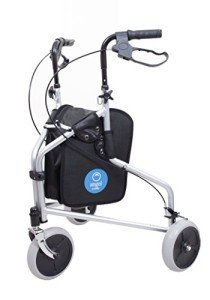Understanding Medical Walkers: A Comprehensive Guide
Medical walkers work as indispensable mobility aids for people recovering from surgical treatment, handling persistent illnesses, or handling age-related mobility problems. These gadgets not only enhance physical independence but likewise improve safety, enabling users to browse their environments with greater ease. This short article explores the types, benefits, features, and considerations related to medical walkers, in addition to some often asked questions.
Table of Contents
- Types of Medical Walkers
- Benefits of Using a Medical Walker
- Key Features to Consider
- Regularly Asked Questions
- Conclusion
1. Types of Medical Walkers
Medical walkers are readily available in different designs, accommodating different needs and choices. The primary types include:

| Type of Walker | Description |
|---|---|
| Requirement Walker | A rectangular frame with 4 legs, offering stability and assistance. |
| Two-Wheeled Walker | Similar to a standard walker however equipped with wheels at the front for simpler motion. |
| Three-Wheeled Walker | A Lightweight Four-Wheeled Rollator for Easy Mobility 3-wheel Ergonomic Rollator for easy mobility (www.mymobilityscooters.uk) walker with three wheels, permitting more maneuverability, suitable for indoor use. |
| Rollator For Disabled Walker | A walker with 4 wheels, hand brakes, and a seat, suitable for longer ranges and resting requirements. |
| Hemi Walker | Designed for individuals who can use only one hand, featuring a tripod-like style. |
2. Benefits of Using a Medical Walker
Using a medical walker presents numerous benefits that contribute to the user's overall well-being, including:
- Increased Stability: Walkers provide a stable base of assistance, reducing the threat of falls.
- Enhanced Mobility: They enable users to move more easily, promoting independence.
- Pain Relief: By rearranging weight, walkers can reduce pain in the joints, especially in the hips and knees.
- Posture Support: These gadgets encourage appropriate posture, lowering stress on the back.
- Improved Confidence: Users often feel more safe and secure utilizing walkers, leading to better self-confidence and increased activity levels.
3. Secret Features to Consider
When picking a medical walker, it's crucial to assess numerous functions to discover the right fit. Here are some critical aspects to consider:
- Weight Capacity: Ensure the walker can support the user's weight while maintaining stability.
- Height Adjustment: Look for a walker with adjustable height settings to accommodate the user's height and supply comfortable grip.
- Product: Lightweight Folding Rollator Walker with Comfort Seat aluminum walkers are simpler to steer, while steel walkers offer more powerful support however might be heavier.
- Wheel Quality: If selecting a wheeled Shop Mobiclinic® Foldable Walker Trolley with Seat, consider the wheel size and tread. Bigger wheels navigate unequal surfaces more easily.
- Seat Availability: If users will be walking for longer periods, a walker with an integrated seat can offer rest breaks when required.
- Brakes: Hand brakes are particularly essential for safety in rollator walkers to manage speed and stop when required.
Kinds of Walkers with Features Comparison Table
| Walker Type | Weight Capacity | Height Adjustment | Wheels | Seat Available | Brakes |
|---|---|---|---|---|---|
| Requirement Walker | As much as 300 lbs | Yes | No | No | No |
| Two-Wheeled Walker | As much as 300 pounds | Yes | Yes | No | No |
| Three-Wheeled Walker | As much as 250 pounds | Yes | Yes | No | No |
| Rollator Walker | Approximately 400 pounds | Yes | Yes | Yes | Yes |
| Hemi Walker | Approximately 250 lbs | Yes | No | No | No |
4. Regularly Asked Questions
Q1: Who should use a medical walker?A: Medical walkers are useful for people recuperating from surgical treatment, experiencing balance issues, or needing help due to age-related mobility challenges. Q2: Can a medical walker be adjusted?A: Yes, many
medical walkers are height-adjustable to accommodate different user heights, enabling a more comfy grip. Q3: How do I pick the ideal walker for my needs?A: Consider elements such as the user's weight, height, kind of mobility concerns, and whether they require a seat or brakes. Evaluating the walker for comfort and stability before purchase is also a good idea. Q4: Are there any safety suggestions related to utilizing a medical walker?A: Yes, users should ensure they do not lean too heavily on the walker, use it on steady and level surfaces, and constantly make sure exercise, which aids in healing and mobility enhancement. 5.
the brakes are engaged when seated or fixed. Q5: Can walking with a medical walker aid with rehabilitation?A: Absolutely. Medical walkers are frequently recommended as part of rehabilitation programs as they motivate
Conclusion Medical walkers play a crucial function in boosting the lifestyle for people dealing with mobility obstacles. With different types and functions available, choosing the right walker involves considering the user's specific requirements and scenarios. By understanding their benefits and proper use, people can regain self-reliance, enhance their mobility, and navigate their surroundings safely. Whether for short-term healing or long-lasting assistance, the ideal medical walker can significantly boost a user's general wellness. Including a medical walker into one's daily routine can be a transformative decision, making it simpler to participate in life's day-to-day activities while making sure safety and self-confidence.








